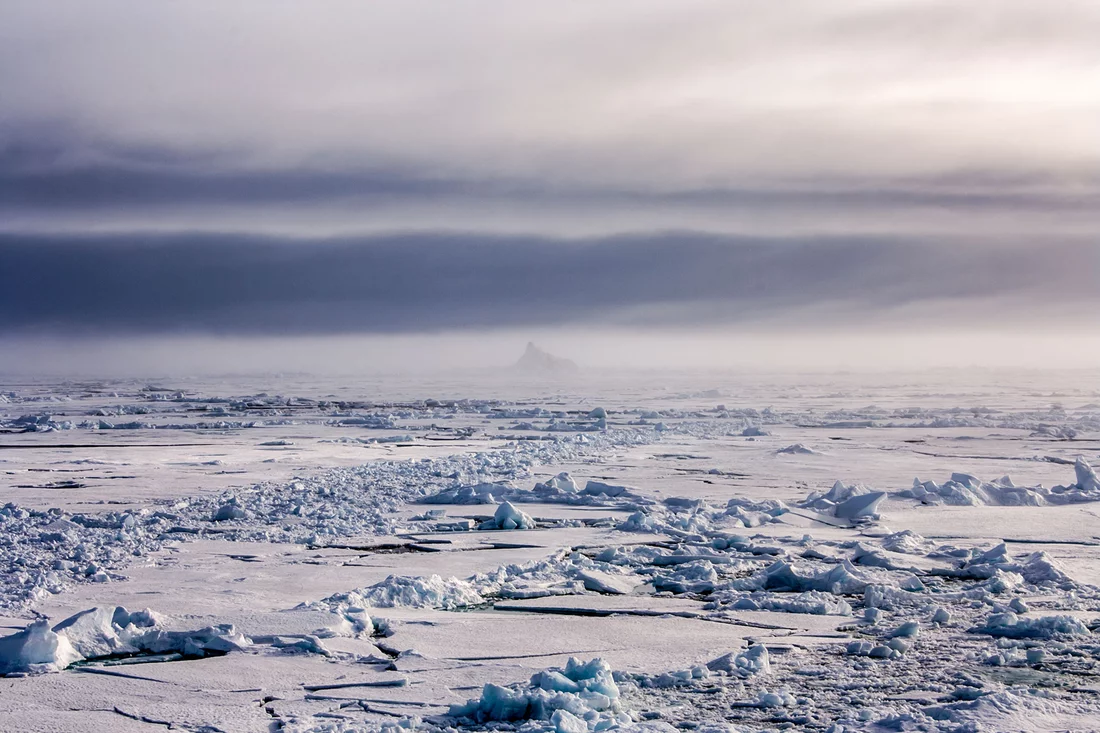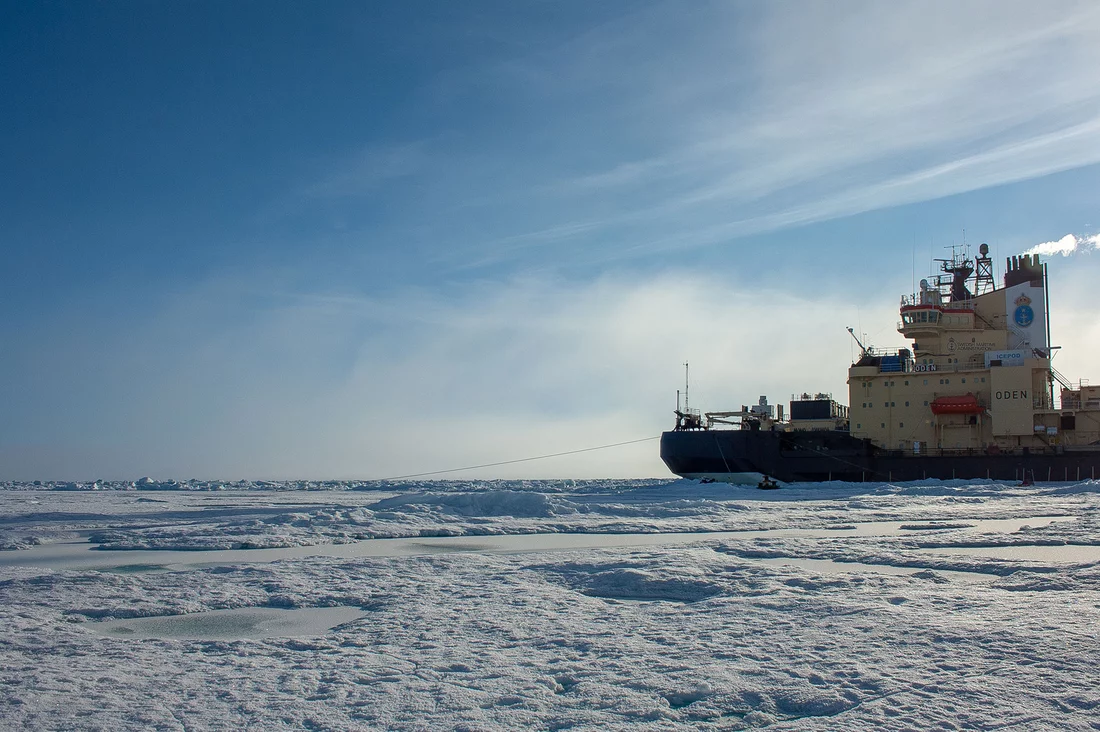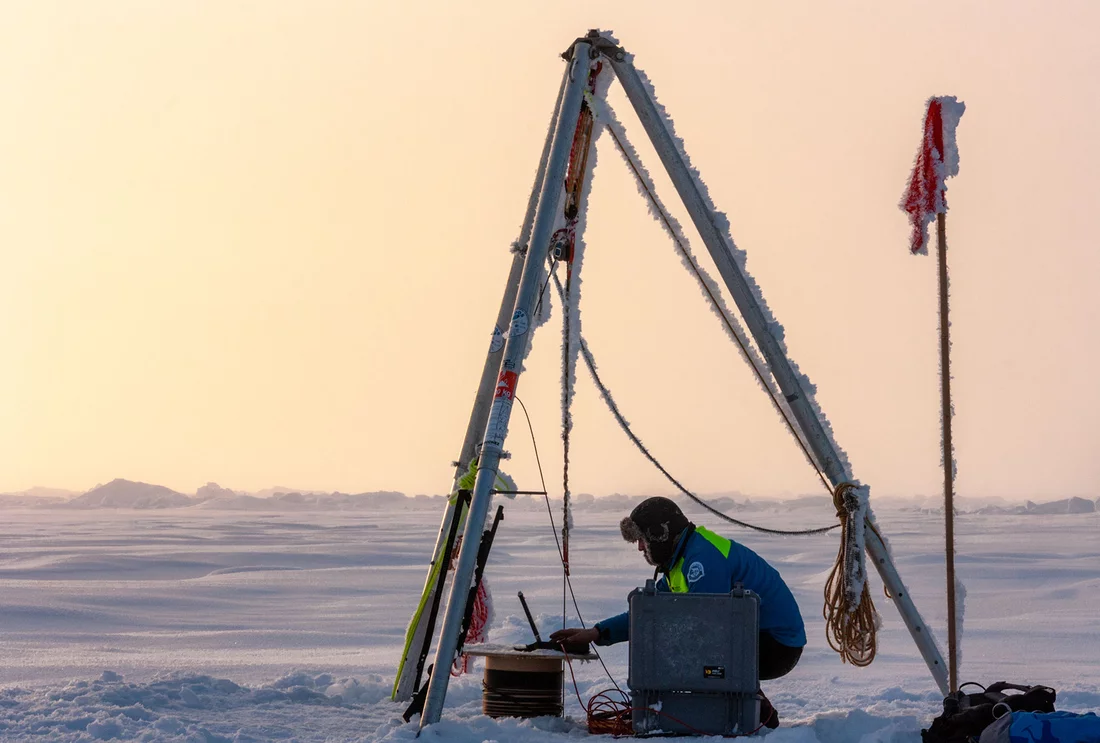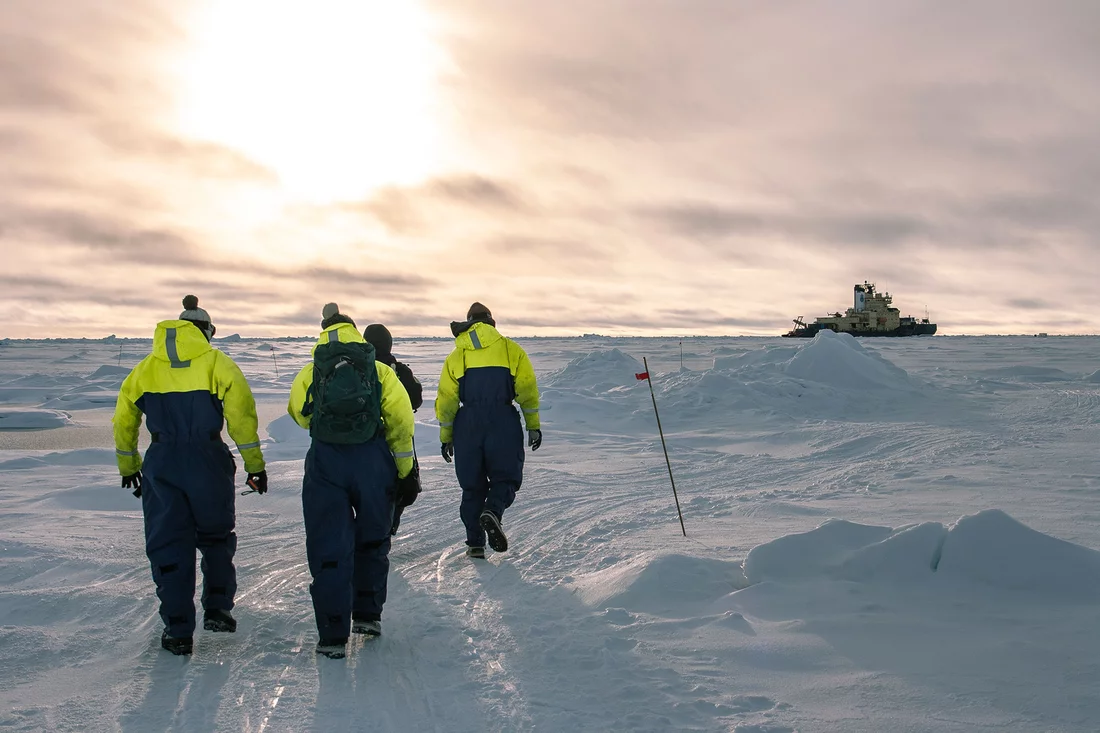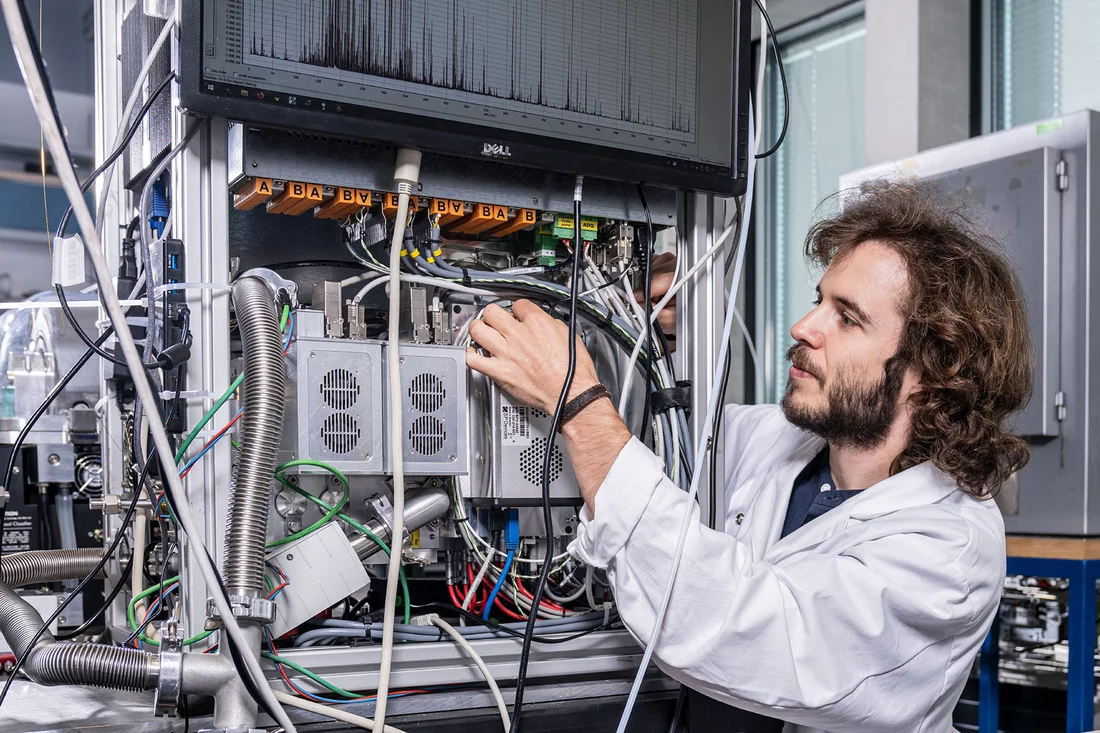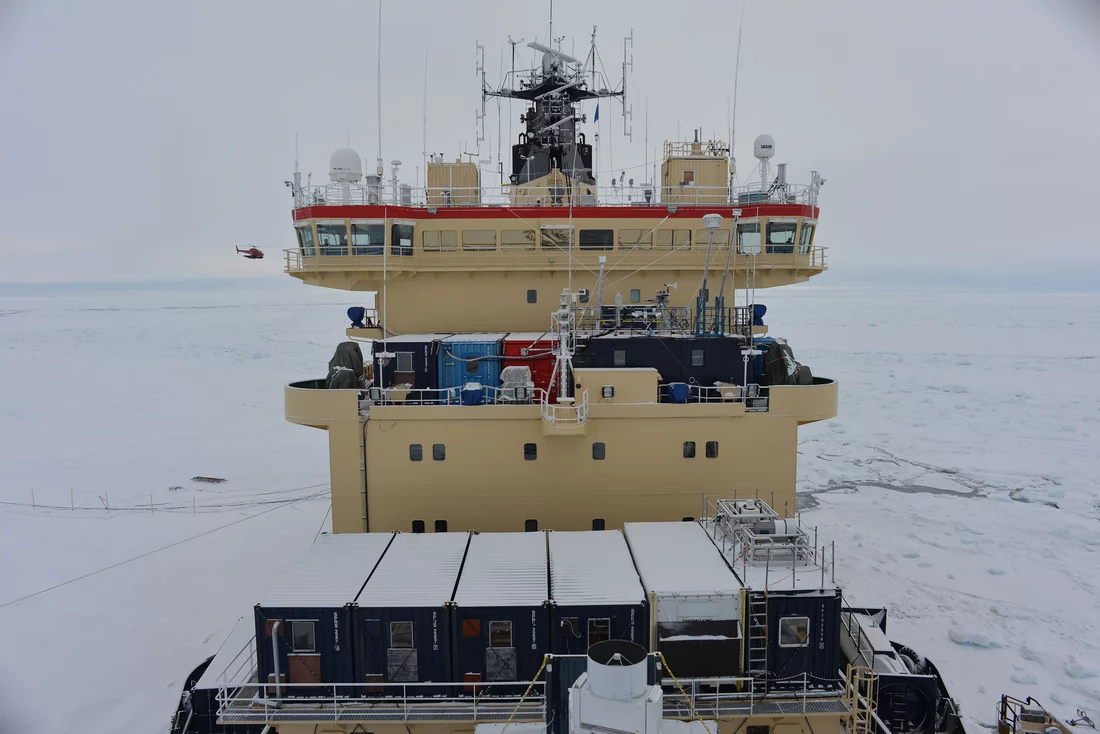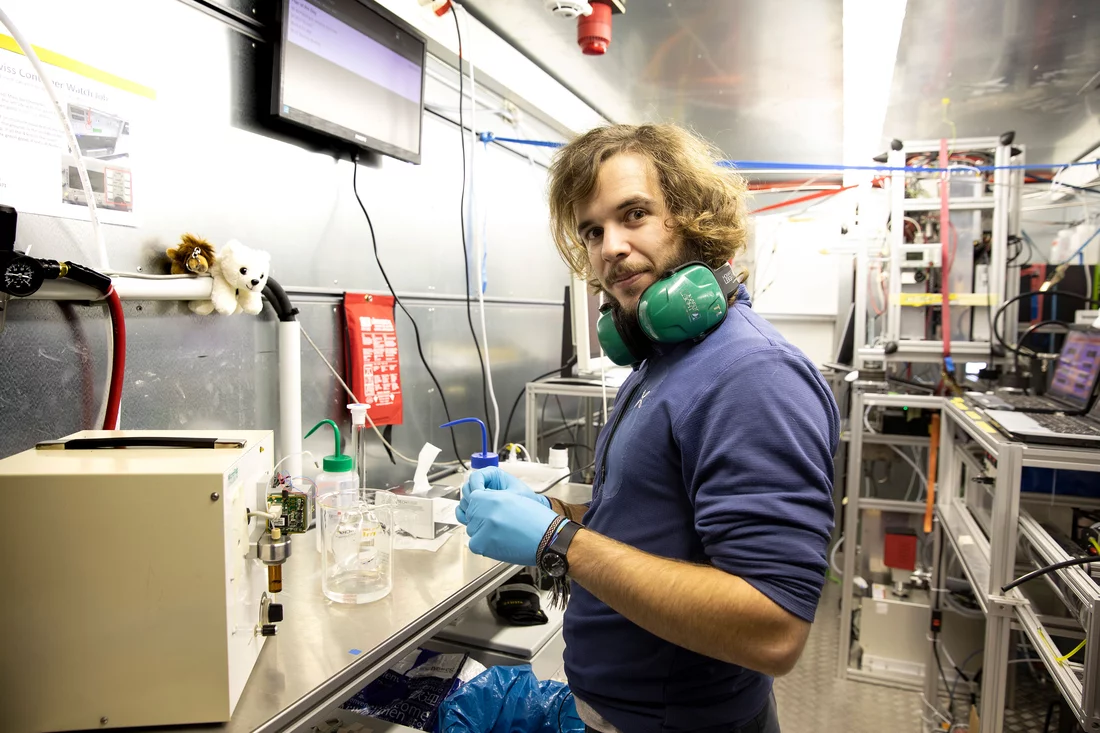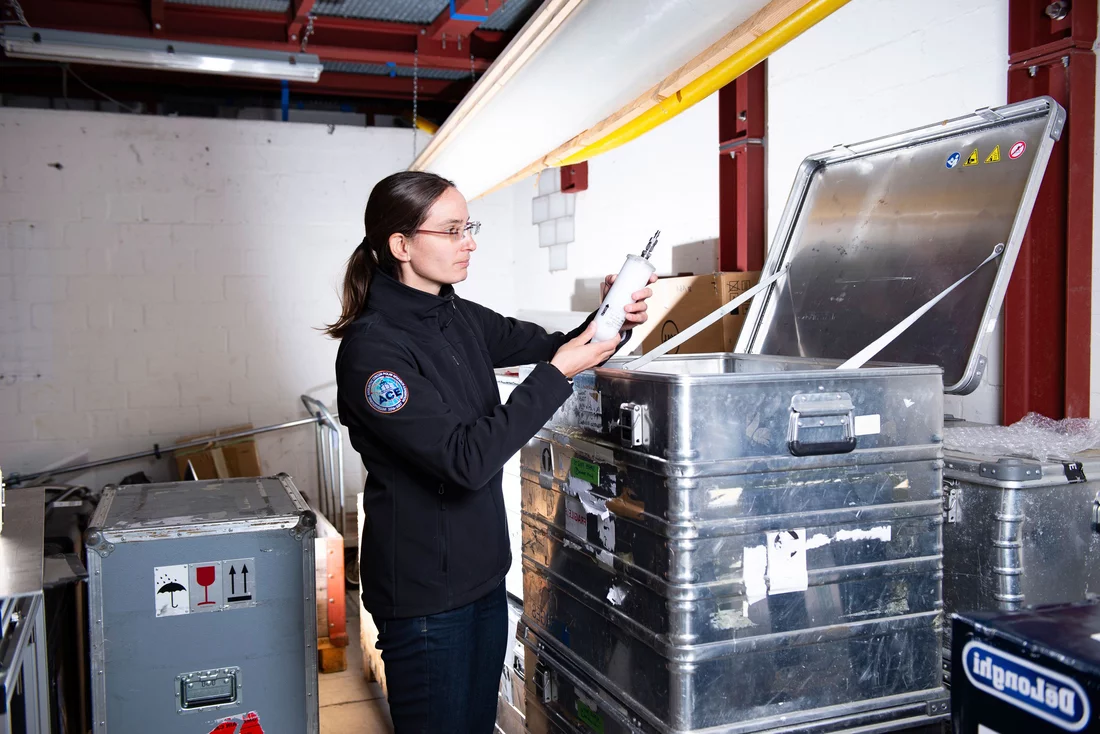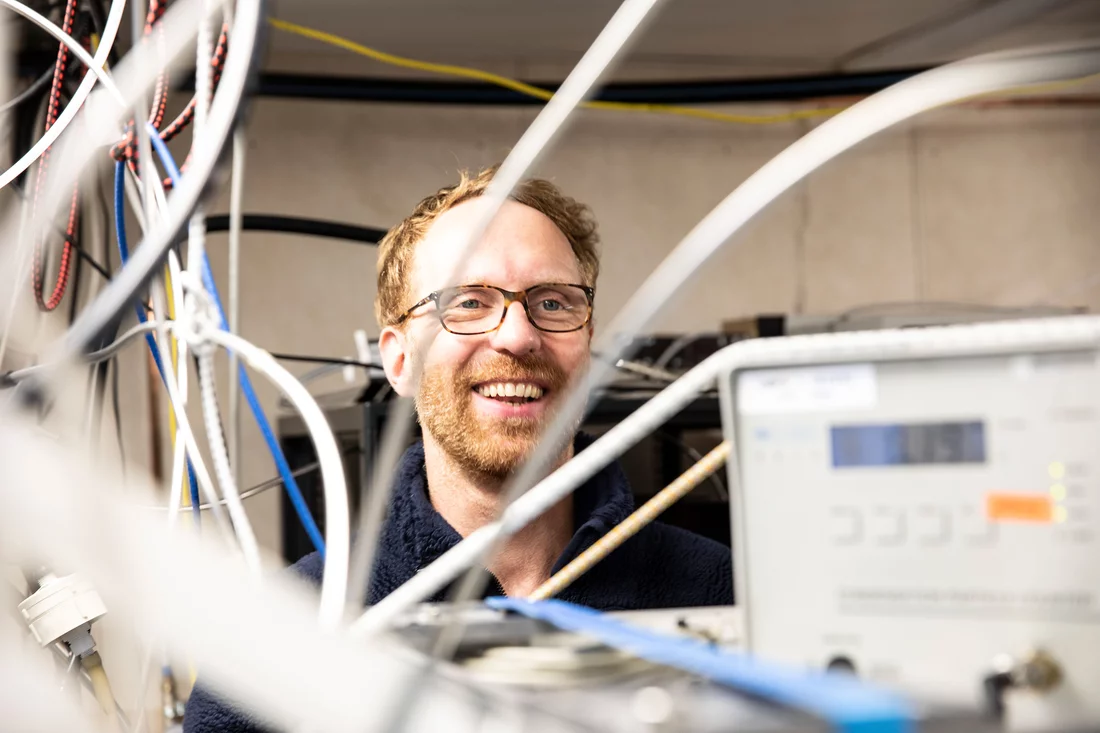An international team of scientists from the Paul Scherrer Institute PSI, the Swiss Federal Institute of Technology Lausanne EPFL, and Stockholm University have identified iodic acid as a novel driver of new aerosol particle formation in the Arctic. The authors show that iodic acid is important for forming new particles, which subsequently influence the formation of clouds. As these reflect solar radiation but also retain heat on the Earth's surface, they have an influence on the warming of the Arctic. The study is published today in the journal Nature Communications.
The Arctic is warming two or three times faster than the rest of the planet. Scientists have identified several factors driving this amplified warming. The relative importance of each factor remains still unclear. "We do know, however, that clouds could play an important role," says Julia Schmale, an EPFL professor, who heads the Extreme Environments Research Laboratory. At the time of the expedition, she headed a research group at the Laboratory of Atmospheric Chemistry at the Paul Scherrer Institute PSI. "By reflecting the sun’s rays back into space or trapping heat close to the Earth’s surface like a blanket, clouds help either cool off or warm up the planet."
Along with other scientists from PSI’s Laboratory of Atmospheric Chemistry and from Stockholm University, Schmale spent several weeks collecting data near the North Pole in August and September 2018, as part of the US-Swedish expedition Arctic Ocean 2018 on board the Swedish icebreaker Oden. The scientists measured the chemical and physical properties of atmospheric molecules and aerosol particles to better understand the conditions leading to cloud formation. "With this expedition, we could investigate the exact sources of aerosol particles that are needed to form clouds," adds Paul Zieger, an assistant professor at Stockholm University who led the research project on aerosol-cloud processes of the 2018 expedition.
From aerosols to clouds
"One of our objectives was to investigate how new aerosol particles could form in the Arctic atmosphere," says Andrea Baccarini, a PhD student at the Paul Scherrer Institute and now scientific collaborator in the Extreme Environments research Laboratory. "Under the right conditions, gas molecules condense together into small clusters that can grow, eventually forming aerosols." If these aerosols reach a certain size, they can function as cloud condensation nuclei, which are essential for cloud formation.
In the Arctic summer and fall, the concentration of aerosols is extremely low. "The contribution of newly formed aerosols can be extremely important and even a small change in aerosol concentration in the high Arctic could have a major impact on cloud formation or alter clouds’ radiative properties," says Baccarini.
Iodic acid appears in early fall
The research team found that iodic acid triggers the formation of new aerosols between late summer and early fall. "There is less ice in the Arctic at the end of the summer, a lot of open water and the concentration of iodic acid is very low at that point," says Schmale. "Towards the end of August the temperature drops and the water starts refreezing. This is when the iodic acid concentration sharply increases leading to frequent new aerosol particle formation events."
Iodic acid is formed in the atmosphere from the oxidation of iodine or other molecules containing iodine. The exact mechanism responsible for the release of iodine over the Arctic pack ice is still not known. Based on previous studies, the authors hypothesize that iodine could be released by biotic activity of microalgae living under the sea ice or due to chemical reactions on frozen surfaces containing sea salt.
The team developed a simple model to explain the variability of iodic acid in the atmosphere, which largely depends on local meteorological conditions. They were also able to describe the full chain of events that leads all the way from new particle formation to clouds, from the gas molecule that initially creates a particle to the formation of cloud condensation nuclei. "Observing and describing this process under real-world conditions was an extremely rare opportunity", says Schmale.
Based on a media release by EPFL with additions from the Paul Scherrer Institute/Brigitte Osterath
Further information
A floating lab – animated infographics showing the Swedish research vessel Oden
Contact
Andrea Baccarini
Laboratory of Atmospheric Chemistry
Paul Scherrer Institute, Forschungsstrasse 111, 5232 Villigen PSI, Switzerland
E-mail: andrea.baccarini@psi.ch [Italian, English]
Julia Schmale
Extreme Environments Research Laboratory
École polytechnique fédérale de Lausanne Valais Wallis, Rue de l'Industrie 17, Case postale 440, 1951 Sion, Switzerland
Telephone: +41 21 695 82 69, e-mail: julia.schmale@epfl.ch [German, English, French]
Research partners
- Laboratory of Atmospheric Chemistry, Paul Scherrer Institute, Villigen PSI, Switzerland
- Department of Environmental Science & Bolin Centre for Climate Research, Stockholm University, Sweden
- Department of Physics & Atmospheric Science, Dalhousie University, Halifax, Canada
- School of Earth and Environment, University of Leeds, UK
- Department of Atmospheric Chemistry and Climate, Institute of Physical Chemistry Rocasolano, CSIC, Spain
- Department of Meteorology & Bolin Centre for Climate Research, Stockholm University, Sweden
- Extreme Environments Research Laboratory, School of Architecture, Civil and Environmental Engineering, EPFL, Switzerland
Original publication
Frequent new particle formation over the high Arctic pack ice by enhanced iodine emissions
A. Baccarini, L. Karlsson, J. Dommen, P. Duplessis, J. Vüllers, I. M. Brooks, A. Saiz-Lopez, M. Salter, M. Tjernström, U. Baltensperger, P. Zieger, J. Schmale
Nature Communications, 1 October 2020 (online)
DOI: 10.1038/s41467-020-18551-0
Copyright
PSI provides image and/or video material free of charge for media coverage of the content of the above text. Use of this material for other purposes is not permitted. This also includes the transfer of the image and video material into databases as well as sale by third parties.

